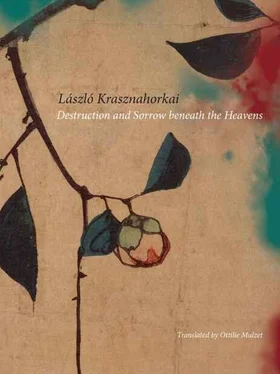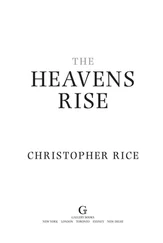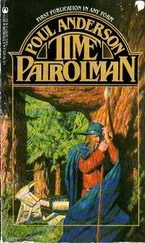[2] Huang Shen (1687–1768): A famous painter of the early Qing era. One of the ‘Eight Eccentrics of Yangzhou’, he is particularly well known for his portraiture.
[3] Ying Yujian (twelfth — thirteenth century): A Chan Buddhist monk-painter, his works are characterized by the free-brush technique.
[4] Shakyamuni Buddha (‘Sage of the Royal Shakya Nation’): The historical Buddha (563 bce–483 bce).
[5] Lotus Sutra (Saddharmapundarika Sutra; literally, Sutra on the White Lotus of the Sublime Dharma): One of the most popular of the sacred Mahayana scriptures. The most widely diffused translation from Sanskrit was created in 406 ce by Kumarajiva. According to this sutra, the Buddha teaches sentient beings variously, according to their abilities, but the goal always remains the same — to reach Buddhahood.
[6] Amida Sutra: The sutras of Amitabha the Buddha of the Western Paradise. The most important sacred texts of the Pure Land School, according to which the ultimate goal is not to become a Buddha but, through meditation and prayer, to be reborn in the Pure Land.
[7] Guanyin (Avalokiteshvara): In Chinese Buddhism, Avalokiteshvara, originally a male bodhisattva, became the goddess of children and of compassion.
[8] Sándor Petőfi (1823–49): One of the greatest Hungarian poets and a revolutionary who symbolized the Hungarian desire for freedom.
[9] Lu Xun (1881–1936): One of the most significant writers and thinkers of the first half of the twentieth century, and considered the father of modern Chinese literature.
[10] bodhisattva: The ideal of Mahayana Buddhism — a being who reaches enlightenment but does not enter nirvana so that he may remain in the world and help others reach enlightenment.
[11] Baisui Gong (‘The Hundred Years Temple’): A monastery at Jiuhuashan, and named after a monk who lived for 120 years. The statue in the temple is supposedly his mummified body.
[12] Huacheng Si (‘The Monastery Surrounded by Walls’): Built in 781 in Jiuhuashan, its current buildings date from the Qing era.
[13] Taiping Uprising (1851–64): The peasant uprising that occurred over a great part of South and Central China, the goal of which was the creation of a society based on equality. Nanjing was the centre of the revolt.
[14] Beiji Tower: An astrological observation tower built in 1385 in Nanjing.
[15] Jiming (‘Crowing of the Cock’): A Buddhist monastery built in 1387 in Nanjing. Now, the location of one of the very few nunneries in China.
[16] Mochou (‘Do Not Worry’ Lake): The most famous lake in Nanjing whose name derives from a beautiful woman who was forced against her will to marry a potentate.
[17] Song dynasty (960–1279): The dynasty named after the ruling Song family, characterized by enormous technical, economic and cultural development, yet relatively weaker military strength.
[18] Ming dynasty (1368–1644): Chinese dynasty that provided an interval of native Chinese rule between eras of Mongol and Manchu dominance as well as a period of cultural flowering.
[19] Zhu Yuanchang (1328–98): The founder of the Ming dynasty, a man of humble origins. He made Nanjing the capital of his empire.
[20] blood-thirsty Japanese: In December 1937, the Japanese occupied Nanjing and subsequently massacred hundreds of thousands of residents.
[21] Linggu Si (‘The Monastery of the Valley of Souls’): Founded in 514. At the time of the construction of Zhu Yuanzhang’s mausoleum, it was relocated to its present location, near Zijin Shan (‘The Purple-Gold Mountain’) in Nanjing. During the Taiping Uprising it was destroyed in a fire.
[22] Wuliang Dian (‘The Hall of the Immeasurable Buddha’): A fourteenth-century building in the Linggu Si in Nanjing, built from stone and brick, which is unusual in China. For that reason it is also referred to as ‘The Beamless Hall’.
[23] Grand Canal: The world’s lengthiest man-made waterway, constructed in the seventh century and connecting the lower courses of the Yangtze with northern China.
[24] Sui dynasty (581–618): After a long period of disunity, the short-lived Sui dynasty ushered in a period of unification.
[25] Tang dynasty (618–907): One of the most resplendent periods in Chinese history, and the Golden Age of Chinese culture.
[26] Yangzhou pinghua: A genre of storytelling that flourished in Yangzhou in the first half of the Qing dynasty.
[27] Ouyang Xiu (1007–72): A renowned politician, writer and poet of the Song era.
[28] Su Dongpo (1037–1101): A politician and one of the most important writers of the Song era.
[29] Jianzhen (688–763): A Buddhist monk from Yangzhou who, after many unsuccessful attempts, finally reached Japan in 753 and went on to become a crucial figure in the spread of Buddhism in that country.
[30] Wenfeng Ta (‘The Pagoda of the Summit of Erudition’): An octagonal building of seven storeys, this is the first building a traveller to Zhenjiang sees from the vantage point of the Grand Canal.
[31] Shigong Si (‘The Memorial Temple of Master Shi’): A temple in Yangzhou, built in 1772 in memory of Shi Kefa.
[32] Shi Kefa (1602–45): A government official and calligrapher who, during the Manchurian invasion of 1645, was responsible for the defence of Yangzhou. He was eventually executed by the Manchurians.
[33] He Yuan, Ge Yuan, Xi Yuan: Qing-era parks in Yangzhou.
[34] Daming Si (‘The Temple of Great Illumination’): A Buddhist temple built in the fifth century in Yangzhou. It is here that Jianzhen studied the sutras and initiated people into monkhood before he left for Japan.
[35] Han dynasty (206 bce — ce 220): The second great Chinese imperial dynasty which thoroughly established what was thereafter considered Chinese culture.
[36] Shou Xihu (‘The Slender Western Lake’): A lake in Yangzhou, whose name refers to its longish shape as well as to the fact that it is a ‘more slender’ imitation of the famous West Lake in Hangzhou.
[37] Ouyang Memorial temple: Originally built by an admirer of Ouyang Xiu in Yangzhou, the contemporary structure is from 1934.
[38] Bai Ta (‘White Stupa’): Standing on the banks of Yangzhou’s West Lake, this Buddhist reliquary is a copy of the structure of the same name in Beijing.
[39] Wenchang Street: Named after one of the renowned Ming-era sights of Yangzhou, the Wenchang Ge (‘Revival of Flourishing Erudition’) tower.
[40] mao: Also known as the jiao, this is the currency sub-unit of the yuan; 1 yuan equals 10 mao.
[41] Wang Anshi (1021–86): A famous political reformer, poet and writer.
[42] Mi Fei (1051–1107): Also known as Mi Fu. A renowned painter, calligrapher and collector of artworks.
[43] Wenzong Ge: The pavilion in Zhenjiang destroyed during the Taiping Uprising.
[44] Siku Quanshu (‘Complete Library in Four Sections’): An imperial collection of books transcribed by hand since the 1770s, containing approximately 3,500 works and 2.3 million pages in 1,500 volumes. Altogether 7 copies were preserved in separate buildings in 7 different locations in the empire.
[45] Beigu Mountain: In reality, just a hill in Zhenjiang on the banks of the Yangtze, but famous because the wife of a third-century ruler threw herself into the river at this spot. The Ganlu Si (‘The Sweet Dew’ monastery), located on the side of the hill and dating from the third century, was largely destroyed during the Second World War.
[46] Jinshan (‘Gold Mountain’): Originally an island, now a peninsula in the Yangtze at Zhenjiang. Formerly, it was renowned for its countless temples (according to the proverb: ‘In Jiaoshan the mountain covers the monasteries, in Jinshan the monasteries cover the mountain’). During the Cultural Revolution, many of the buildings were heavily damaged.
Читать дальше












